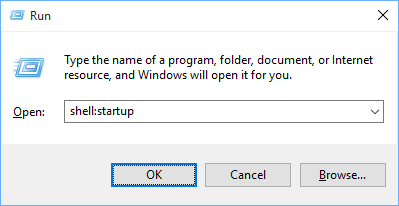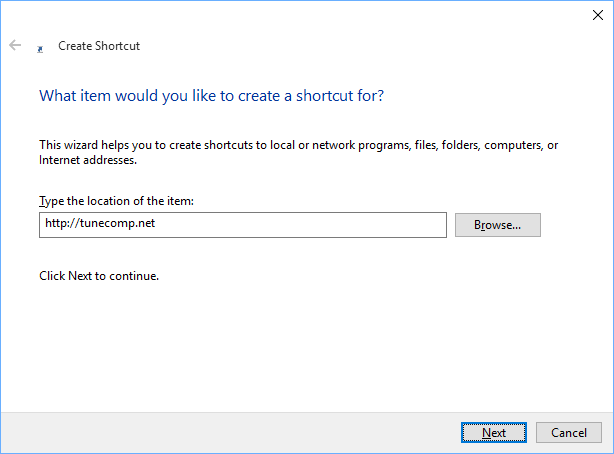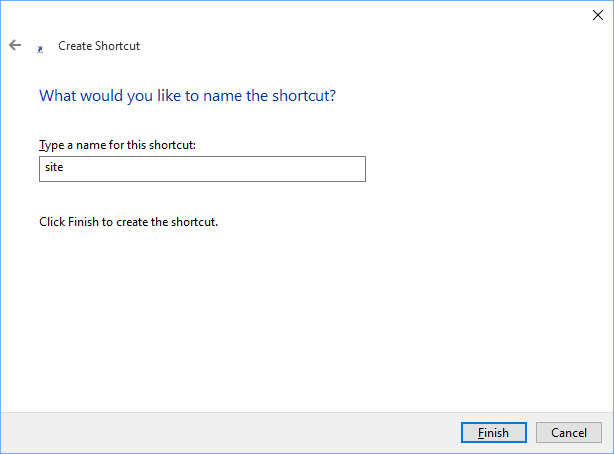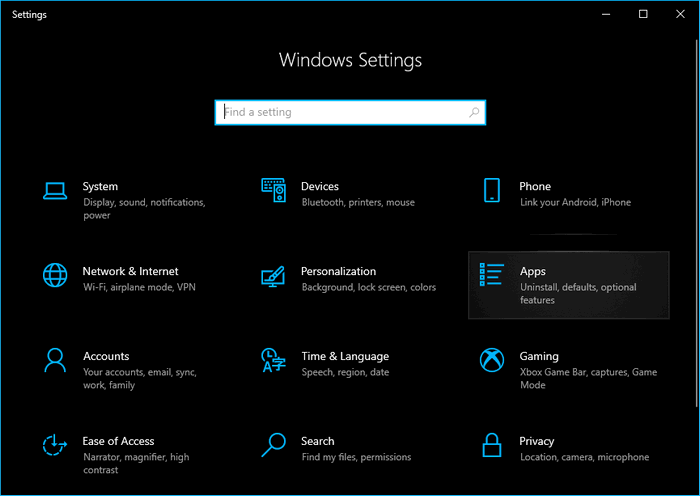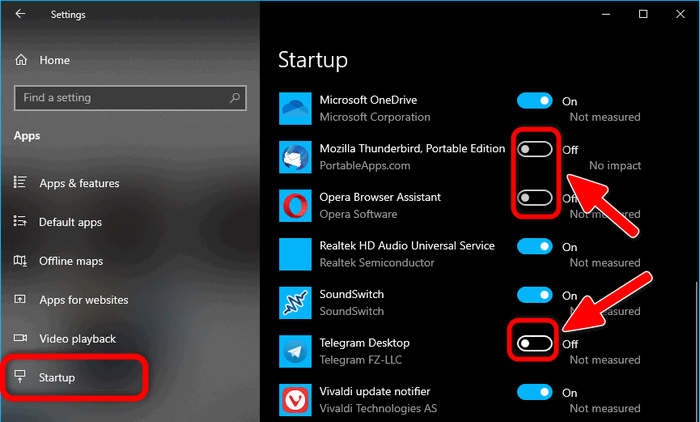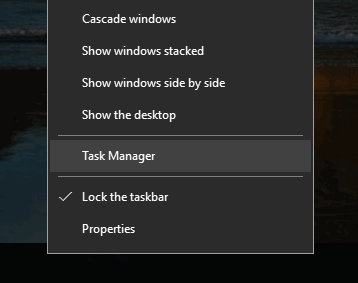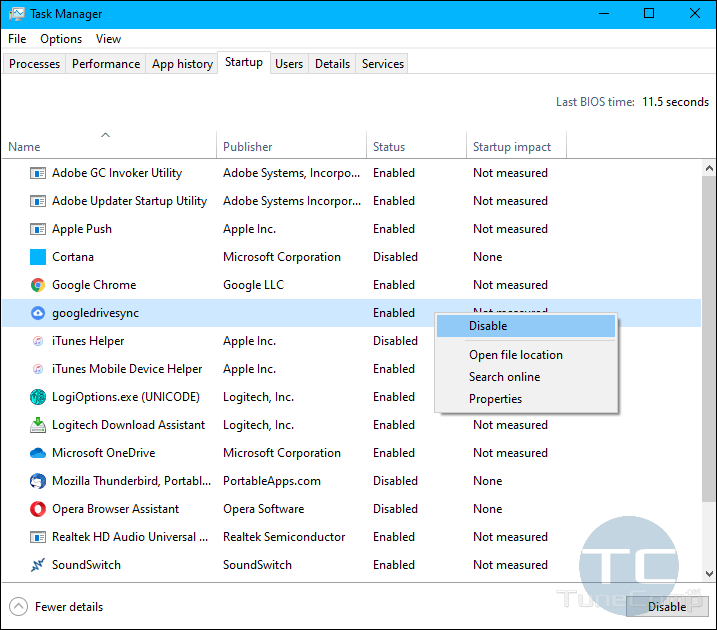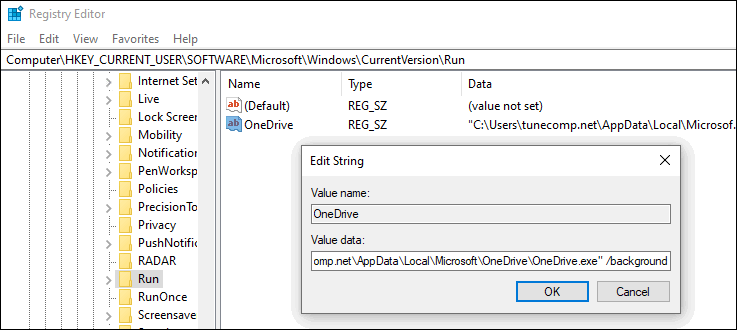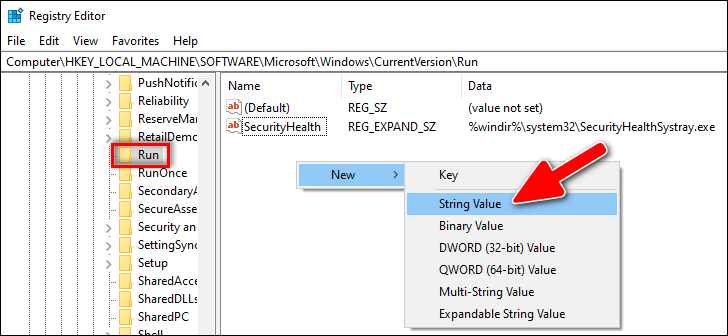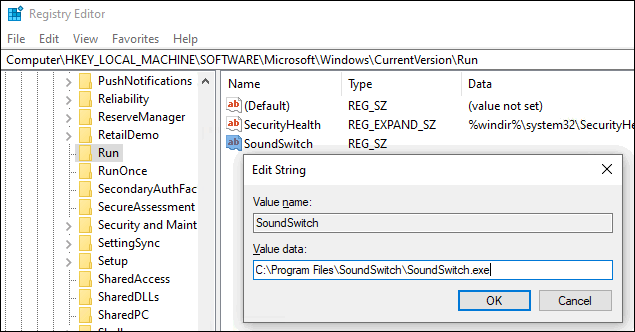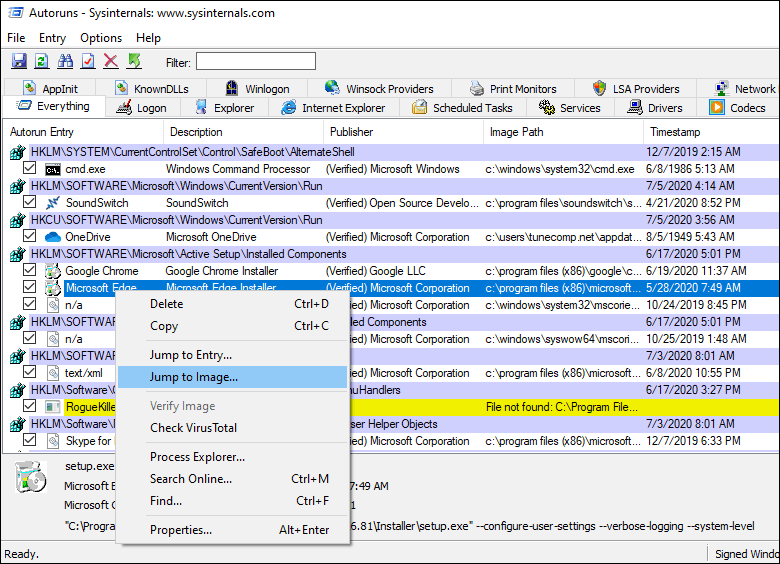- How to Add an App or Program to Startup in Windows 10: Startup Folder, Registry, Scheduler
- Windows 10 Startup Folder Location
- How to Quickly Open the Startup Folder in Windows 10, 8, 7
- Method 1
- Method 2
- How To Add Programs To Startup In Windows 10 For The Current User
- Add a Startup Program For All Users At Once
- Alternative Method To Create A Shortcut In Windows 10 Startup Folder
- How to Make Modern Apps Run on Startup in Windows 10
- How to Disable Startup Apps in Windows 10
- Method 1: Use Settings
- Method 2: Use Task Manager
- Add or Remove Startup Apps / Programs in the Task Scheduler
- Use Registry Editor to Manage Windows 10 Startup Apps & Programs
- How to Add Programs to Startup Using the Registry Editor
- Manage Startup Apps & Programs Using the Autoruns Utility
- The Conclusion
- 4 ways to enable an app to run at the Windows 10 startup
- 1. Check the settings of the app that you want to run at Windows 10 startup
- 2. Use the Windows 10 Settings to enable an app to run at startup
- 3. Make an app load at Windows 10 startup, using the Task Manager
- 4. Open any app automatically at startup by adding it to the Windows 10 Startup folder
- Do you know other methods to make an app run at startup in Windows 10?
How to Add an App or Program to Startup in Windows 10: Startup Folder, Registry, Scheduler
Not all programs have such an option in their settings that lets you enable or disable its automatic start when you turn on your PC.
But you may want to add apps and programs to startup in Windows 10 and make them automatically launch when the PC boots up to a user account.
By the way, it’s not only about apps. You can do the same even with a document, URL address or folder if you need.
Here is an ultimate guide on how to find the startup folder for a particular user or for all users and make any program run at startup in Windows 10.
[Quick Navigation]:
Before we start explaining the boring process, it should be mentioned that some programs have a special option in their settings called “load when Windows starts”, “launch when system starts” or something alike.
Thus, all you need to do is go to the program’s setting, enable the auto-start option and that’s all. No shortcuts needed:
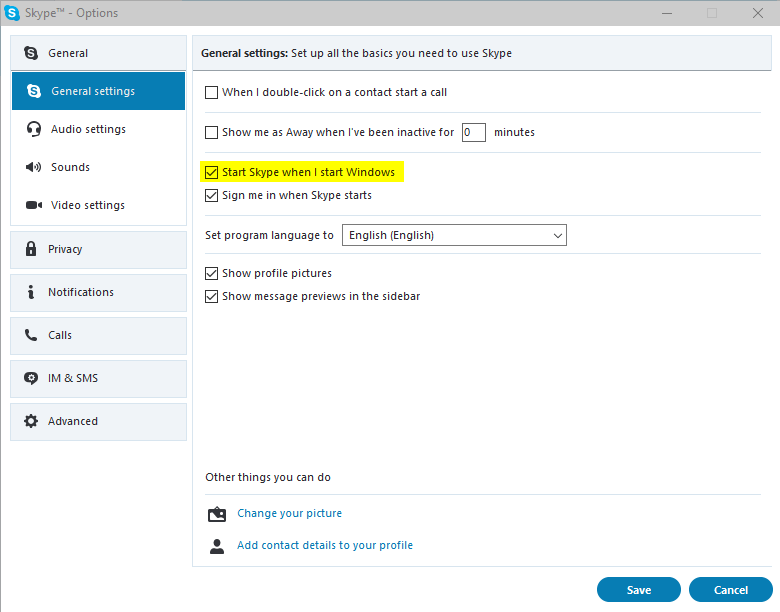
For programs that don’t have such parameter read the rest of the tutorial on how to find the startup folder and change startup programs in Windows 10.
Note that in the latest versions of Windows 10 all programs that were running at the moment when you shut down or rebooted your computer, automatically start the next time you log in.
This in any case doesn’t mean that those programs are added to Windows 10 startup folder, scheduler, or whatever. This is a standalone feature of Windows 10 which is enabled by default.
Windows 10 Startup Folder Location
If you want to add a program, app, URL or document to startup you should place its shortcut to user startup folder. By default it is located in:
How to Quickly Open the Startup Folder in Windows 10, 8, 7
Method 1
- Copy this address: %APPDATA%\Microsoft\Windows\Start Menu\Programs\Startup
- Press Win+E to open Windows 10 Explorer.
- Paste it into the address bar:
- Hit Enter :
Method 2
Another way to open Windows 10 startup folder is to use the Run dialogue:
- Press Win+R
- Type
- Click OK or press Enter :
How To Add Programs To Startup In Windows 10 For The Current User
You may put shortcuts to various items into this directory. But be cautious: adding too many programs to the startup folder can make your PC boot slowly (especially if you are still using a classic hard disk drive as your system disk).
Perform the following steps:
STEP 1. Open the Startup Folder using any method explained above.
STEP 2. Copy a program, app, folder, document, link or anything else: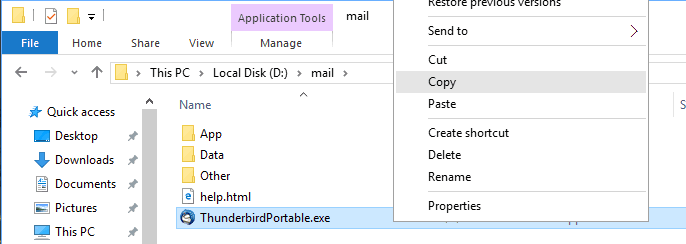
STEP 3. Paste the shortcut to startup folder: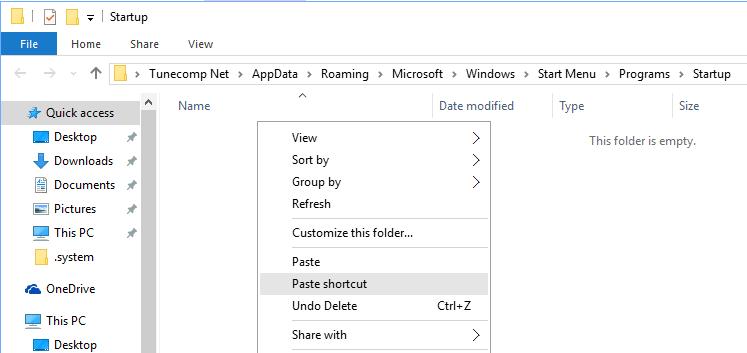
This is how it should look like:
The same steps in the video guide:
Add a Startup Program For All Users At Once
If you wish to set a program to run on startup for all users accounts, create its shortcut in common startup folder. In Windows 10 its default location is:
You can open it by the path: %ProgramData%\Microsoft\Windows\Start Menu\Programs\StartUp or using the Run dialogue as we explain below.
- Press Win+R .
- Type
- Press Enter :
- Copy the executive file or document.
- Use Paste or Paste shortcut to place one to Common startup folder:
Alternative Method To Create A Shortcut In Windows 10 Startup Folder
- Right-click the empty area and select New -> Shortcut :
- Browse the file or folder or enter URL and press Next :
- Give a name to your new shortcut and press OK :
How to Make Modern Apps Run on Startup in Windows 10
You can also add Modern apps from Microsoft Store to startup folder. Follow the steps:
-
- Open the startup folder: press Win+R , type shell:startup , hit Enter .
- Open the Modern apps folder: press Win+R , type shell:appsfolder , press Enter .
- Drag the apps you need to launch on startup from the first to the second folder and select Create shortcut:
Now restart your computer and check if your program, app or another item you specified runs correctly as you log in to the user account (or as soon as your PC signs in automatically as we explained here).
How to Disable Startup Apps in Windows 10
As you might know, the more apps are added to startup, the longer you have to wait before you start using your PC.
That’s why users often apply the following steps to disable unnecessary programs from being launched at log in.
Here is how to stop programs from running at startup in Windows 10.
Method 1: Use Settings
- Press Win+I on your keyboard to launch Windows 10 Settings;
- Dive into the Apps category:
- Select Startup in the left pane;
- Disable apps you don’t want to be launched when you log in to your user account:
Method 2: Use Task Manager
- Right-click the Taskbar and click Task Manager :
- Go to the Startup tab;
- Select the app you wish to disable from auto launching;
- Click Disable :
Here is the video guide:
Add or Remove Startup Apps / Programs in the Task Scheduler
The simplest way to open the Task Scheduler in Windows 10 is to press “Win+R”, type “taskschd.msc” and hit “Enter”.
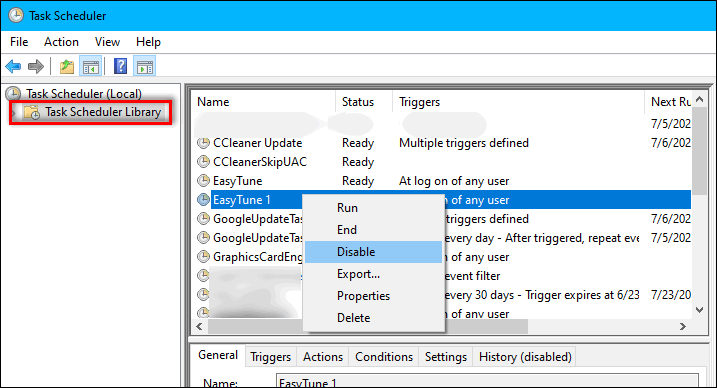
Here you can look through the list of auto-start items, add new or remove existing. Using the Task Scheduler requires some experience. So, be careful while using it.
If you are not sure what to do with a certain startup item, first opt to “Disable” it and check the result rather than “Delete”.
Use Registry Editor to Manage Windows 10 Startup Apps & Programs
The system registry is yet another way to add or remove auto-start apps in Windows 10. Feel free to use it if this option is more preferable.
Launch the registry editor: press “Win+R”, type “regedit” and hit “Enter”.
Here you will see all programs that start when the current user logs in.
If you didn’t find the app you expected, check another registry key responsible for the common startup (for all users on the current PC):
How to Add Programs to Startup Using the Registry Editor
First, you need to decide either you want to run the program when the current user logs in, or all users on the computer at once. Depending on your decision, navigate to the one of the mentioned above registry keys.
Then, in the right part of the Registry Editor window right-click on the empty area and select New > String value
Give it a name, enter the path to the program you wish to add to Windows 10 startup and click “OK”.
Manage Startup Apps & Programs Using the Autoruns Utility
Sysinternals Autorun is a free utility that you can download from its official website https://docs.microsoft.com/en-us/sysinternals/downloads/autoruns
It doesn’t require the installation – you need just to launch the exe file.
With the help of the Autoruns utility you can:
- view the list of everything that automatically starts on your PC and remove startup items;
- use the Jump to Image option to reveal the location of the program;
- use the Jump to entry option to find out the way how the particular program added to auto-start (startup folder, registry key, scheduler, etc);
- scan startup items for viruses using VirusTotal in 1 click and see the result in the corresponding field of the program;
- and much more.
The Conclusion
If you know how to achieve the same result in easier ways, please drop a comment below. We will also be very grateful if you share this article on social networks. Thank you and good luck!
4 ways to enable an app to run at the Windows 10 startup
In Windows 10, there are certain apps and programs that are launched automatically when the operating system starts. These are called startup apps. Although some apps configure themselves to load at the Windows 10 startup, not all your apps do that, and there are situations when you might want to enable a specific app to run as soon as Windows 10 boots. Here are four ways to make any Windows 10 app launch at startup:
1. Check the settings of the app that you want to run at Windows 10 startup
One way to make an app launch automatically when Windows 10 starts is by configuring that app’s settings. Not all apps allow you to do that, but some of them do. Such examples include Skype, Spotify, or Slack, but the list goes on. Depending on the app, the setting that allows it to run at Windows 10 startup might be called something like “start [app] when I start Windows,” “open [app] automatically after you log into the computer,” “launch [app] on login” and so on.
For example, in Spotify, you have to open the app, access its Settings, go to the Advanced settings, and select “Open Spotify automatically after you log into the computer.”
Here’s another example: in Skype, you need to open the Settings, go to General, and enable the switch for “Automatically start Skype.”
Every app is different, so browse through the settings available in yours to find out if it has an option to launch at Windows 10 startup automatically.
2. Use the Windows 10 Settings to enable an app to run at startup
For the apps that natively support the option to launch at startup, you can also use the Windows 10 Settings to enable this behavior. First, open the Settings app – a quick way to do it is by clicking or tapping on its button from the Start Menu.
In the Settings app, open the Apps category.
Select Startup on the left side of the window and Settings should show you a list of apps that you can configure to start when you log in. Find the apps that you want to run at the Windows 10 startup and turn their switches on.
If you see an app that’s already set to launch at startup and you don’t want that, you can turn off its switch.
3. Make an app load at Windows 10 startup, using the Task Manager
Windows 10 provides us with yet another tool that we can use to enable or disable apps from running at startup: the Task Manager. Open it and switch to its detailed view by clicking or tapping on the More details button. Then, select the Startup tab from the top side of the window.
If the app that you want to enable to run at the Windows 10 startup is shown in the list, select it (click/tap on it), and then press the Enable button from the bottom-right corner of the window.
If you want to know more about the startup apps, not just how to enable or disable them, we’ve covered the subject in more detail here: How to view and disable startup programs from Windows 10’s Task Manager.
4. Open any app automatically at startup by adding it to the Windows 10 Startup folder
This last method works for any app (from the Microsoft Store, or desktop app) you might want to run at the Windows 10 startup, regardless of whether it has that option in its settings, and even if you can’t find it in the Startup apps list from Settings or Task Manager. Furthermore, this method also works for files, folders, or even websites that you might want to automatically open when Windows 10 boots. Here’s how it works:
Open File Explorer and type shell:startup in its address bar. Then, press Enter on your keyboard or click/tap on the Go to button from the right end of the address bar.
Shell:startup takes you to your Startup folder. Its full address looks like this: “C:UsersYour User nameAppDataRoamingMicrosoftWindowsStart MenuProgramsStartup”. If you prefer, you can type this entire address, but we feel it is much faster to type in just shell:startup, isn’t it? 🙂
To enable an app to run at Windows 10 startup, all you have to do is create a shortcut to it in your Startup. If you don’t know how to create shortcuts, you can learn here: Create shortcuts for apps, files, folders, and web pages in Windows 10.
Note that the shell:startup folder lets you enable apps to run at the Windows 10 startup only when you sign in to your (current) user account. The apps you add to it are not going to automatically open when other users log into Windows 10. If you want to enable an app to run at the Windows 10 startup for all the user accounts, you need to make a shortcut to it in the shell:common startup folder (“C:ProgramDataMicrosoftWindowsStart MenuProgramsStartUp”).
Do you know other methods to make an app run at startup in Windows 10?
These are the ways we know for enabling apps to run at Windows 10 boot. All of them are easy to follow, as the steps involved are relatively simple. If you need our help or if you know other methods, don’t hesitate to leave a comment.
